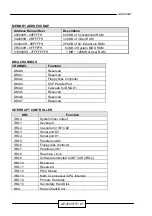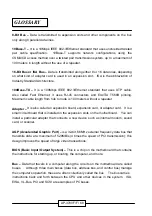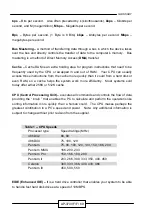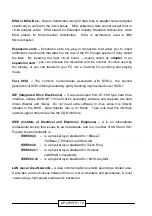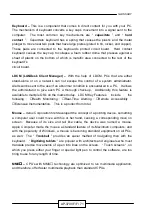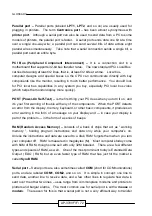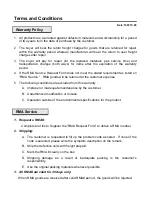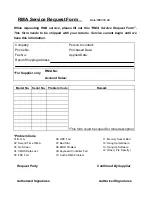
GLOSSARY
AP-370VF/F / 69
bps –
Bits per second. Also often preceded by k (kilo/thousands),
kbps
– Kilobits per
second, and M (mega/million),
Mbps
– Megabits per second.
Bps
– Bytes per second. (1 Byte is 8 Bits)
kbps
– kilobytes per second.
Mbps
–
megabytes per second.
Bus Mastering –
A method of transferring data through a bus in which the device takes
over the bus and directly controls the transfer of data to the computer’s memory. Bus
mastering is a method of Direct Memory Access (
DMA
) transfer.
Cache –
Cache RAM is an extra holding area for program instructions that need to be
frequently used by the CPU or swapped in and out of RAM. Your CPU can usually
access those instructions from the cache more quickly than it could from a hard disk or
even RAM, so a cache helps the system work more efficiently. Most systems sold
today offer either 256K or 512K cache.
CPU (Central Processing Unit) –
executes all commands and controls the flow of data,
providing the “ brain ” that enables the PC to calculate and perform the operations like
sorting information more quickly than a human could. The CPU makes perhaps the
greatest contribution to a PC’s speed and power. Note: Any additional information is
subject to change without prior revision from the supplier.
Table 1 -- CPU Speeds
Processor type
Speed ratings (MHz)
486DX2
66,
80
486DX4
75, 100, 120
Pentium
75, 90, 100, 120, 133, 150, 166, 200
Pentium MMX
166, 200, 233
Pentium Pro
150, 166, 180, 200
Pentium II
233, 266, 300, 333, 350, 400, 450
Celeron
300, 333, 366, 400, 433, 466
Pentium III
450, 500, 550
EIDE (Enhanced IDE) –
It is a hard drive controller that enables your system to be able
to handle fast hard disk drives at a speed of 10MBPS.













